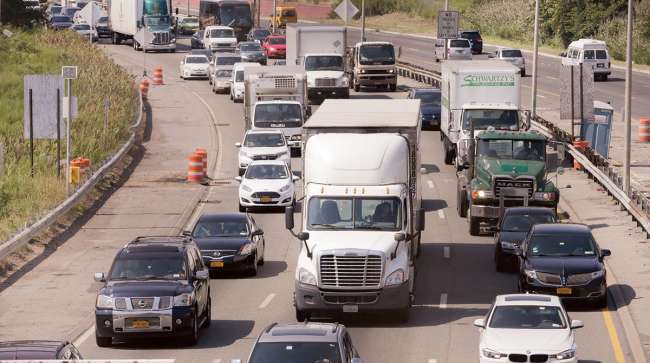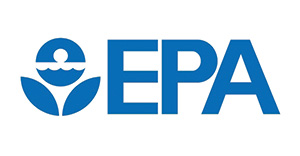Senior Reporter
Groups Urge Cautious Approach With EPA NOx Proposal

[Stay on top of transportation news: Get TTNews in your inbox.]
Transportation groups expressed general support for the goal of reducing nitrogen oxides emissions in comments filed with federal regulators regarding a proposal to set stricter NOx limits for trucks, but cautioned against an overly aggressive approach that could be harmful to motor carriers’ operations and ability to serve the public.
American Trucking Associations in a 29-page written comment on the U.S. Environmental Protection Agency proposal said it is generally supportive of the goal to reduce NOx, but stressed that the message from its fleet members is clear:
“Minimize purchase, maintenance, warranty and operational costs; maximize performance, durability and driver satisfaction; maintain fleet flexibility in technology and fuel choices; do not reopen the final Phase 2 rule; and do not create unintended consequences such as equipment pre-buys/low-buys or no-buys, alteration of fleet turnover cycles, and fuel economy degradation,” it wrote.

The proposal offered two options to reduce NOx. Option 1 is basically 0.035 gram per brake horsepower-hour for model-year 2027-30 trucks, and then stepping down to 0.02 gram per brake horsepower-hour for 2031-plus. Option 2 is 0.05 gram per brake horsepower-hour for MY27-plus. It also raised the possibility that the Phase 2 Large Truck Greenhouse Gas Emissions rule may need to be modified, an idea that has been panned by many in the industry.
In its comments, ATA said its areas of support for the proposal range include reduction of NOx emissions and recognition that NOx reductions should align with both EPA’s Phase 2 and Phase 3 greenhouse rules. It also seeks EPA acknowledgment that cleaner diesel trucks will remain integral for the foreseeable near-term future, along with flexibility for manufacturers with technology platform pathways. The public comment period on the rule closed May 16, after EPA granted an extension.
ATA staunchly opposes one approach suggested in the proposal.
“Option 1 is the California Air Resources Board standard and ATA does not support California’s extreme and unattainable approach as the next national standard for diesel freight trucks for the rest of the country,” the group wrote.
READ MORE: Industry Leaders Raise Concern About Proposed EPA NOx Rule
The Truck and Engine Manufacturers Association said it generally supported the proposed rule, but had an array of detailed critical and cautionary comments in its 173-page comment document. That included criticism of Option 1.
“The stakes of this rulemaking are very high,” it said. “Indeed, if EPA were to finalize its proposed Option 1, that would, as a practical matter, preclude the production and sale of heavy-duty diesel engines starting in 2027. OEMs cannot and so will not be able to build Option 1-compliant products. Such an unacceptable outcome from this rulemaking must be avoided.”
EMA said its members fundamentally agree with multiple major provisions contained in the rule, but are hopeful that the agency’s final rule will be “consensus-based, highly cost-effective, and fully implementable starting with the 2027 model year.”
The American Truck Dealers Division of the National Automobile Dealers Association said it has long supported continuous improvements in NOx control for heavy-duty on-road engines, but cautioned against getting too aggressive.

Host Michael Freeze discusses insurance coverage and costs with Jane Jazrawy of Carriers Edge and David Berno of Hub International. Tune in above or by going to RoadSigns.TTNews.com.
“ATD has consistently stressed the importance of avoiding NOx reduction mandates that require ‘too much, too soon’ given that, by definition, such mandates would necessarily result in unduly expensive products with compromised reliability, fuel economy, durability, serviceability or other performance characteristics,” ATD wrote.
The group added, “In light of the relatively small margin of emissions potentially targeted by a new NOx rule, and the significant costs involved with potential new technologies and strategies, a full and robust cost/benefit analysis must be conducted to fully evaluate those costs and to appropriately quantify the ambient air quality and human health benefits expected to accrue starting in MY 2027 and thereafter.”
For its part, the California Air Resources Board said EPA should align its NOx standard with its own, an approach CARB said has “already demonstrated is feasible.”
“CARB’s heavy-duty Omnibus Regulation includes a comprehensive set of revisions designed to ensure that NOx emissions from heavy-duty engines are significantly reduced from the time the vehicle/engine is first sold until the end of its useful life,” CARB wrote.
Want more news? Listen to today's daily briefing above or go here for more info
The Owner-Operator Independent Drivers Association called the NOx proposal an “impractical approach to achieving emissions reductions that discounts the contributions of the trucking industry, ignores realities from previous flawed emissions rulemakings, and does not thoroughly contemplate the operational impacts on small trucking businesses.”
The Truckload Carriers Association said it is “disappointed with the proposed standards put forth by the EPA because the measure does not fully appreciate current market and technology constraints within the trucking industry.”
“TCA believes the regulations would limit equipment options for carriers, as well as worsen environmental outcomes in the long run by applying unmanageable pressure on pricing and disincentivizing fleet turnover,” it said.

